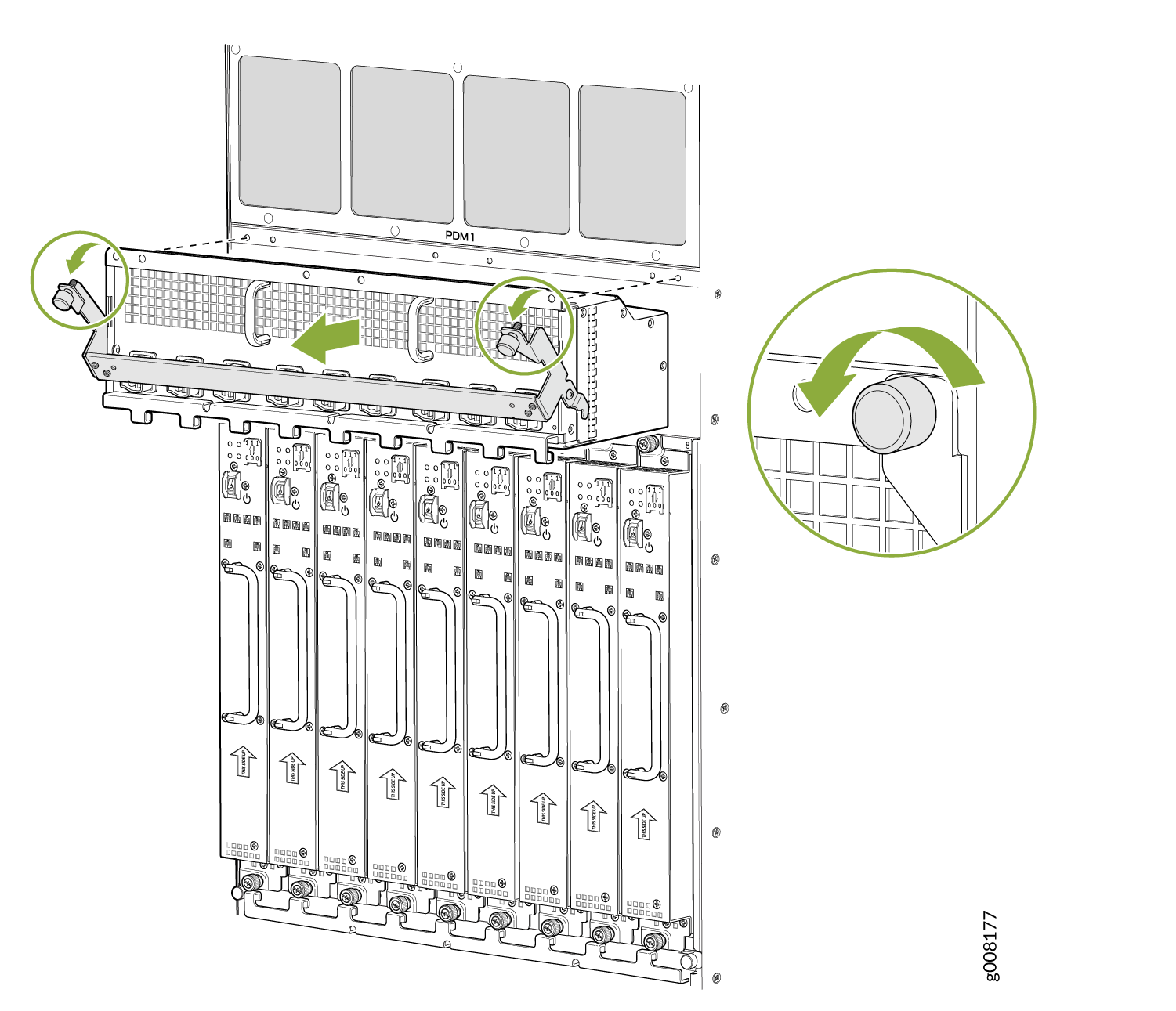ON THIS PAGE
Removing the Power Distribution Modules Before Installing an MX2000 Router with a Pallet Jack
Removing the Power Supply Modules Before Installing an MX2000 Router
Removing the MPCs and Adapter Card Before Installing an MX2010 Router
Removing the MPCs Without Removing an Adapter Card Before Installing an MX2010 Router
Removing Components from the MX2010 Router Chassis Before Installing It in a Rack
Before installing the router with a pallet jack, you must first remove shipping covers and components from the chassis. With components removed, the chassis weighs approximately 324 lb (146.96 kg).
The shipping covers help guide the chassis into the rack. Applying force to any other part of the chassis can cause damage.
Removing the Power Distribution Modules Before Installing an MX2000 Router with a Pallet Jack
Remove the topmost PDM (PDM1) first, and then work your way downward. To remove an AC, DC, 240 V China, or universal (HVAC/HVDC) PDM (see Figure 1, Figure 2 Figure 3, and Figure 4).




See Also
Removing the Power Supply Modules Before Installing an MX2000 Router
To remove the AC, DC, 240 V China, universal (HVAC/HVDC) PSMs (see Figure 5, Figure 6, Figure 7, and Figure 8):




See Also
Removing the Fan Trays Before Installing an MX2010 Router
Removing the SFBs Before Installing an MX2010 Router
Removing the MPCs and Adapter Card Before Installing an MX2010 Router
To remove an MPC with an adapter card:
Removing the MPCs Without Removing an Adapter Card Before Installing an MX2010 Router
To remove an MPC only, without removing the adapter card (see Figure 12):





